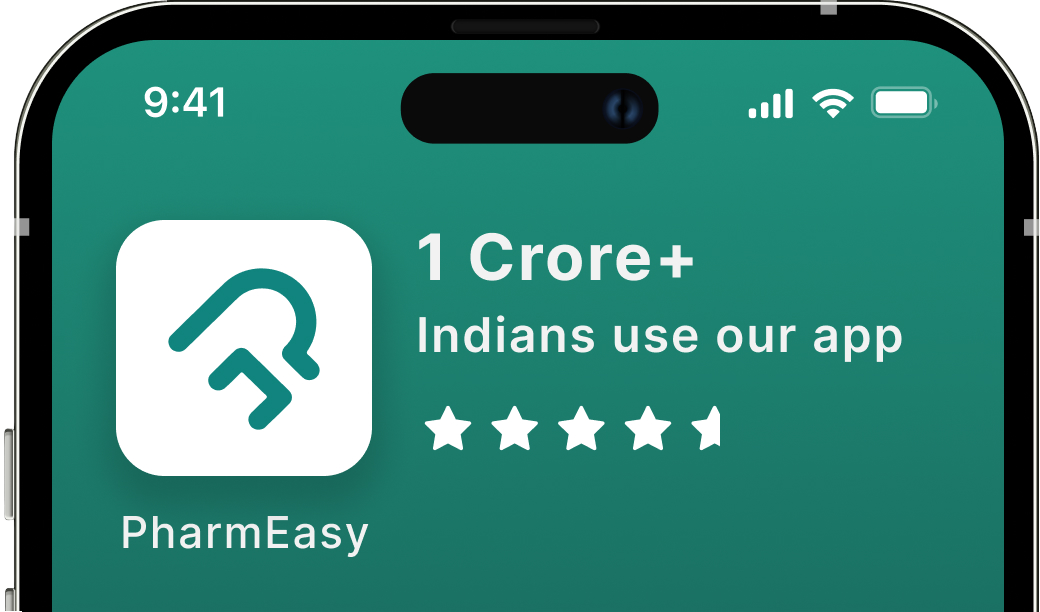Malaria: Types, Symptoms, Causes and Treatment
By Dr. Vishesh Bharucha +2 more

Get,

to manage your symptom
Get your,


4 Cr+ families
benefitted

OTP sent to 9988776655



You’ve successfully subscribed to receive
doctor-approved tips on
Whatsapp

Get ready to feel your best.

Hi There,
Download the PharmEasy App now!!


Register to Avail the Offer
Send OTPBy continuing, you agree with our Privacy Policy and Terms and Conditions

Hi There,
Sign up on PharmEasy now!!
Trusted by 4 crore+ families

OTP sent to 9988776655



You have unlocked 25% off on medicines




Code: NU25

Comments


Leave your comment here
By Dr. Vishesh Bharucha +2 more
Table of Contents
Malaria is one of the most dreaded diseases. It is widespread across more than 90 countries, particularly in sub-Saharan Africa, South Asia, and regions of South America. It occurs when the malaria parasite, Plasmodium, infects the female mosquito, Anopheles1. When the malaria mosquito bites humans, within a period of 10 to 15 days, the malaria symptoms start to occur2.

Malaria symptoms vary depending on the subspecies of the Plasmodium that has infected the Anopheles mosquito. Based on the malarial parasite involved, there are four different types of malaria. Each of these types have a different severity of symptoms and needs to be treated differently.
In this blog, we will discuss in detail about malaria; its type, symptoms and treatment. These will help you better understand this infection and know when to act promptly.
This is the most common kind of malaria. It is the most widely distributed kind, found all across the globe. More than half of malaria infections found across India are of this type. It may be present in dormant stages and its presence can lead to recurrent episodes of the disease.
More often than not, it does not prove fatal but can be severely debilitating. Common symptoms of this kind of malarial disease include fever and chills, diarrhoea, severe fatigue and flu-like symptoms3.
This is one of the least common types of malaria. It is found mostly in western countries of Africa. Rarely, it is also observed in areas of Philippines, Indonesia, and Papua New Guinea. The symptoms include high fevers and shaking chills, headache, cough, diarrhoea, abdominal/joint pain, and body aches. This malaria disease can be recurring as the parasite rests in the patient’s liver and can stay dormant for years. Relapse may occur at any time during this period, with red blood cells being attacked, and the symptoms appearing again. Among all the types of malaria, this one is dangerous, if not deadly4.
This is the deadliest subtype of malaria in the world. This subspecies of the parasite is found in Africa, Southeast Asia, and South America. Unlike the above species, this species does not cause liver-stage relapses.
The patient feels the malaria symptoms like nausea, fatigue, body aches, enlarged spleen, pain in the abdomen, muscles, and joints, fever, headaches, anaemia and specific neurological symptoms like confusion and seizures. The severity of this malaria disease are such that it needs to be checked for, diagnosed and treated in time to prevent fatalities. It can cause significant harm to the brain and the nervous system. Paralysis and convulsions can also occur in this malaria.
If you are travelling to any of the above areas, take your antimalaria medications to prevent this disease5. Additionally, malaria vaccines such as RTS,S/AS01 and R21/Matrix-M are now available to protect children against P. falciparum infection2.
This is the least common kind of malaria. Fever and chills are the usual malaria symptoms. Sub-Saharan Africa and the southwest Pacific are where the malaria parasite causing this kind of malaria is common. It may persist in the bloodstream at low levels for extended periods, causing chronic infection, but it does not remain in dormant form in the liver1,6.
Various regimens are followed in the treatment of malaria, depending on the type and drug resistance in humans. Some common ones include7:
Note: Primaquine should be used with caution in G6PD-deficient patients.
While you may think it’s impossible to avoid getting bitten by a mosquito, malaria prevention methods are widely known and accepted. Here are a few8,9:
While malaria is usually a non-fatal disease, some types may be dangerous and require prompt recognition and treatment. Knowing the types of malaria and their severity allows you to act immediately if you notice any symptoms.
Depending upon the type, several antimalarial medicines are available for treatment, used in various permutations and combinations with other drugs. Yet, the cornerstone of management remains taking adequate precautions to prevent the occurrence of these infections in the first place.
Also Read: Tuberculosis: Types, Causes, Treatment and Prevention
Disclaimer: The information provided here is for educational/awareness purposes only and is not intended to be a substitute for medical treatment by a healthcare professional and should not be relied upon to diagnose or treat any medical condition. The reader should consult a registered medical practitioner to determine the appropriateness of the information and before consuming any medication. PharmEasy does not provide any guarantee or warranty (express or implied) regarding the accuracy, adequacy, completeness, legality, reliability or usefulness of the information; and disclaims any liability arising thereof.
Comments

Leave your comment...

View all comments(1)
You may also like
Nice